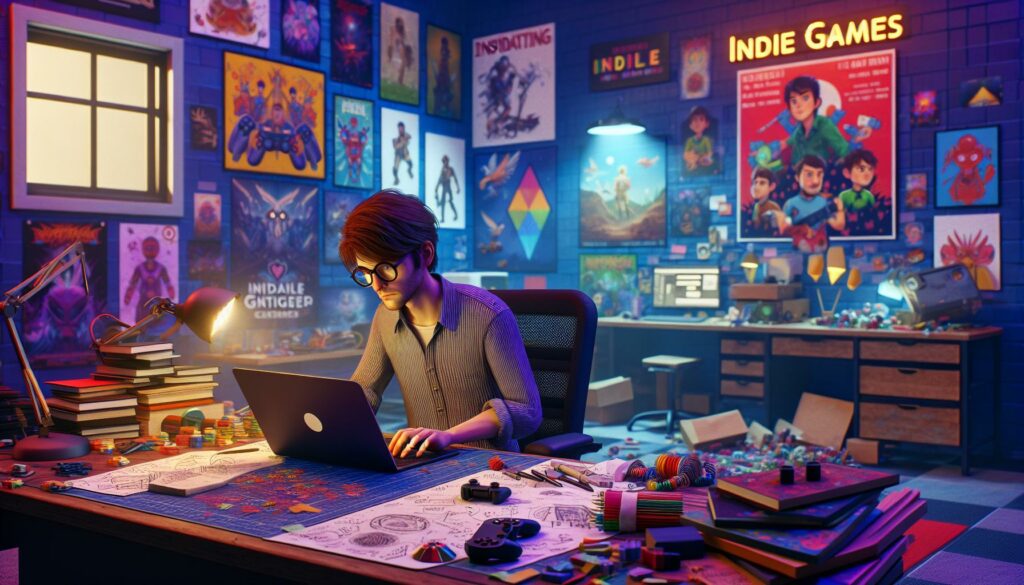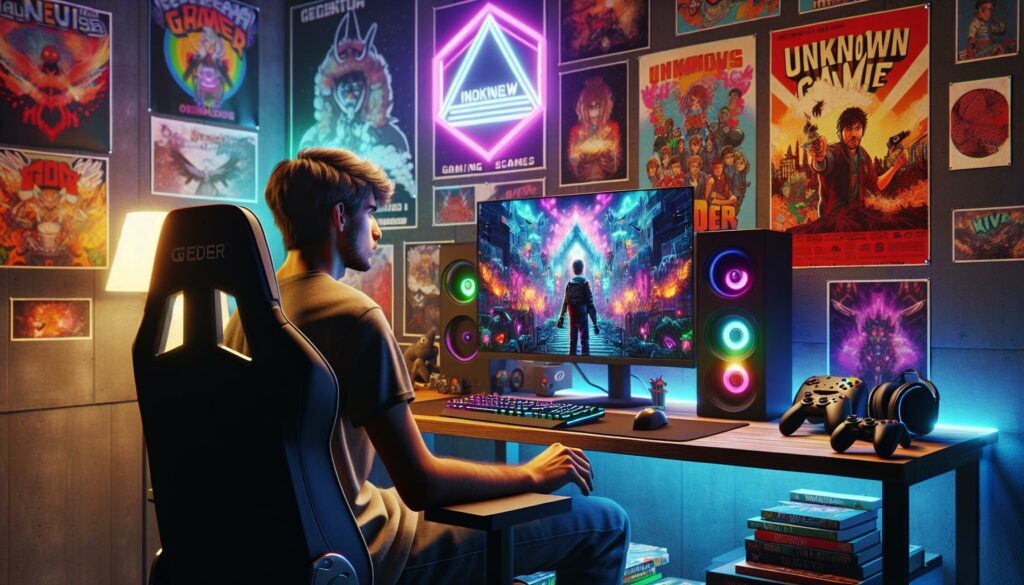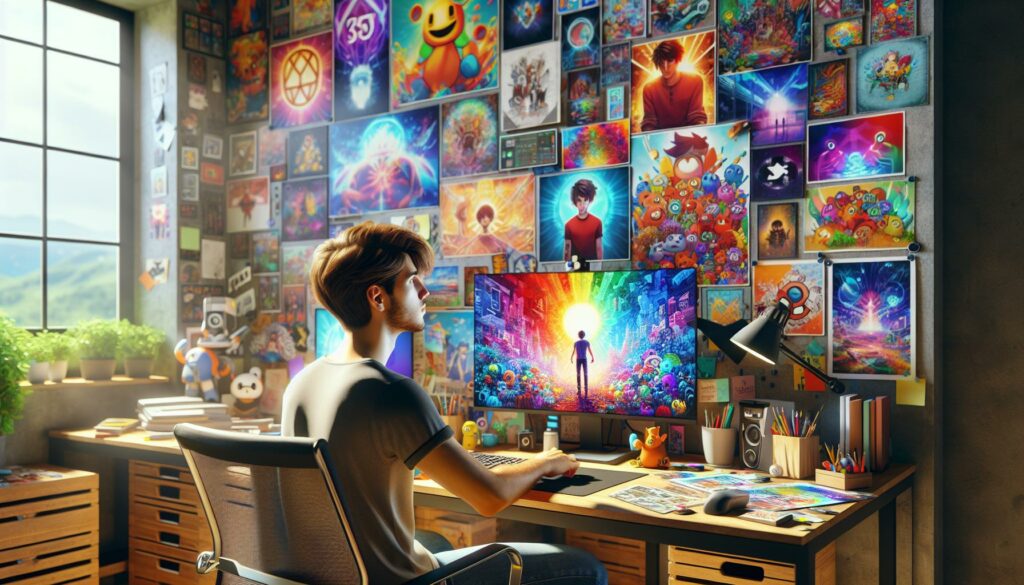As a lifelong gamer I’ve witnessed the fascinating evolution of both indie and AAA titles. While blockbuster games dominate mainstream attention with their massive budgets and cutting-edge graphics smaller independent developers continue to push creative boundaries in unexpected ways.
I’ve spent countless hours exploring both worlds and I’m often asked about the key differences between indie and AAA games. The contrast goes far beyond just budget and team size – it touches everything from creative freedom and innovation to pricing and player experience. Whether you’re a casual gamer or a dedicated enthusiast understanding these distinctions can help you discover amazing gaming experiences you might have otherwise missed.
Key Takeaways
- Indie games typically cost $50K-500K to develop, while AAA games require massive budgets of $60-150M and 3-5 years of development time.
- AAA studios employ 150-300 specialists, while indie teams usually consist of 1-10 developers who handle multiple roles in development.
- AAA games focus on photorealistic graphics and cutting-edge technology, while indie games prioritize unique art styles and creative expression.
- Indie developers have more creative freedom to experiment with innovative gameplay and unconventional narratives, while AAA games follow market-tested formulas.
- AAA titles maintain a $60-70 price point with extensive monetization systems, whereas indie games typically cost $10-30 with simpler revenue models.
- The gaming market is dominated by AAA titles (80% market share), but indie games (20%) continue to influence the industry through innovation and unique experiences.
Indie and AAA Games?
Indie games are independently developed video games created by individuals or small teams, while AAA games are high-budget titles produced by major publishing studios. This fundamental distinction shapes the development process, creative approach, and final product.
Key Differences in Development and Budget
AAA games operate with budgets ranging from $60-150 million, enabling photorealistic graphics and extensive marketing campaigns. Indie game budgets typically range from $50,000-500,000, focusing resources on core gameplay mechanics and unique artistic expression. The development cycle for AAA games spans 3-5 years with rigid deadlines, while indie projects maintain flexible timelines based on available resources and creative vision.
| Game Type | Average Budget | Development Time | Marketing Budget |
|---|---|---|---|
| AAA | $60-150M | 3-5 years | $30-50M |
| Indie | $50K-500K | 6 months-2 years | $5K-50K |
Studio Size and Resources
AAA studios employ 150-300 specialized professionals across departments including programming, art design, sound engineering and quality assurance. The development structure includes:
- Programming teams of 50-75 engineers
- Art departments with 40-60 designers
- Marketing teams of 20-30 specialists
- Quality assurance groups of 30-50 testers
- Core teams of 1-10 developers
- Multidisciplinary roles where developers handle multiple tasks
- Outsourced specialized work for music or animation
- Community-based testing through early access programs
Production Values and Visual Quality

Production values showcase distinct characteristics between indie and AAA games, reflecting their respective budgets and development approaches.
Graphics and Technical Capabilities
AAA games demonstrate cutting-edge graphics with 4K resolution textures high polygon counts of 100,000+ per character model. These titles utilize advanced technologies like ray tracing global illumination particle systems. I’ve observed that AAA studios implement proprietary engines to achieve photorealistic visuals, such as Unreal Engine 5’s Nanite system or DICE’s Frostbite engine.
Indie games focus on technical optimization within limited resources delivering stable performance on mid-range hardware. Many indie developers use established engines like Unity or GameMaker Studio, achieving 60 FPS gameplay through efficient asset management design choices. Popular indie titles like Hollow Knight maintain smooth performance across platforms while using 2D sprites sprites hand-drawn animations.
Art Direction and Style
AAA games pursue standardized visual aesthetics with detailed environments photorealistic character models cinematic presentations. Studios employ specialized art teams for:
- Creating detailed facial animations using motion capture technology
- Designing expansive open worlds with dynamic weather systems
- Implementing high-fidelity visual effects particle systems
- Developing custom shaders materials for surface rendering
Indie games embrace distinctive artistic expressions unique visual identities creative freedom. Notable examples include:
- Cuphead’s 1930s hand-drawn animation style
- Journey’s minimalist desert landscapes ethereal atmosphere
- Disco Elysium’s oil painting-inspired character portraits
- Ori’s luminescent forest environments watercolor aesthetics
The production values reflect core differences in resource allocation creative priorities between indie AAA development approaches. Each path offers unique advantages in delivering compelling visual experiences through different technical artistic methods.
Creative Freedom vs Market Demands
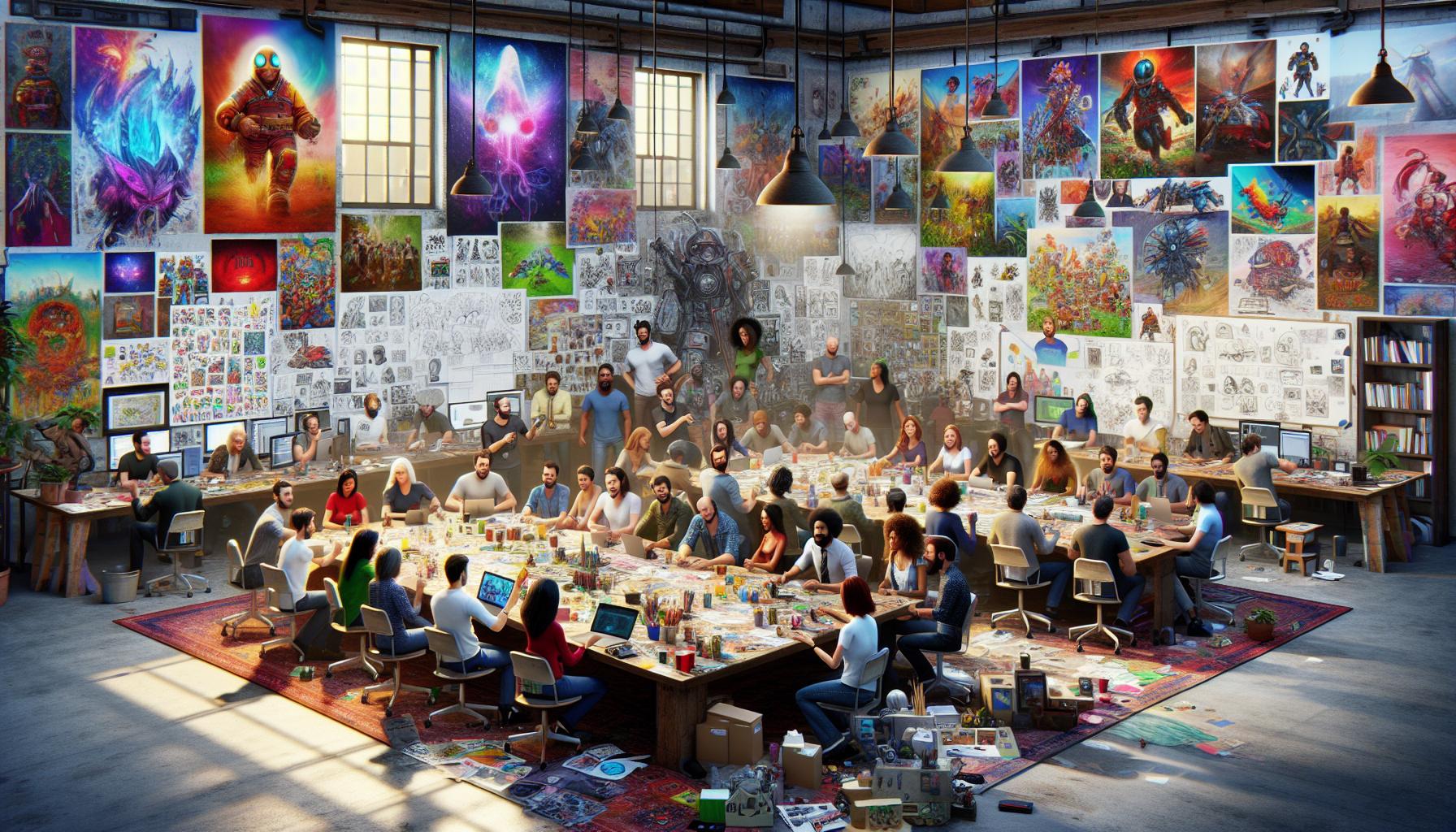
Creative freedom in game development exists on a spectrum between artistic expression and commercial viability, with indie and AAA studios occupying different positions based on their financial constraints and business objectives.
Risk-Taking and Innovation
Indie developers embrace experimental gameplay mechanics and unconventional narratives without traditional market pressures. Notable examples include:
- Creating genre-defying experiences like Undertale’s combat-optional RPG system
- Implementing unique art styles such as Braid’s time-manipulation painted backgrounds
- Exploring controversial themes found in Papers Please’s moral decision-making
- Developing innovative mechanics like Portal’s spatial puzzle-solving
- Testing new narrative structures like Disco Elysium’s complex dialogue systems
Publisher Influence
AAA publishers maintain specific requirements that impact creative decisions throughout development:
- Enforcing market-tested gameplay mechanics to ensure broad appeal
- Requiring multiplayer components for extended player engagement
- Setting mandatory monetization strategies through microtransactions or DLC
- Establishing strict release windows aligned with fiscal quarters
- Mandating sequel potential for successful franchise development
| Aspect | Indie Games | AAA Games |
|---|---|---|
| Development Cost Risk | $50K-500K personal investment | $60M-150M publisher funding |
| Creative Risk Tolerance | High experimentation | Low risk-taking |
| Release Timeline | Flexible deadlines | Fixed launch dates |
| Monetization Freedom | Optional features | Required revenue streams |
| Market Research Impact | Minimal influence | Heavy dependence |
Pricing and Monetization Models
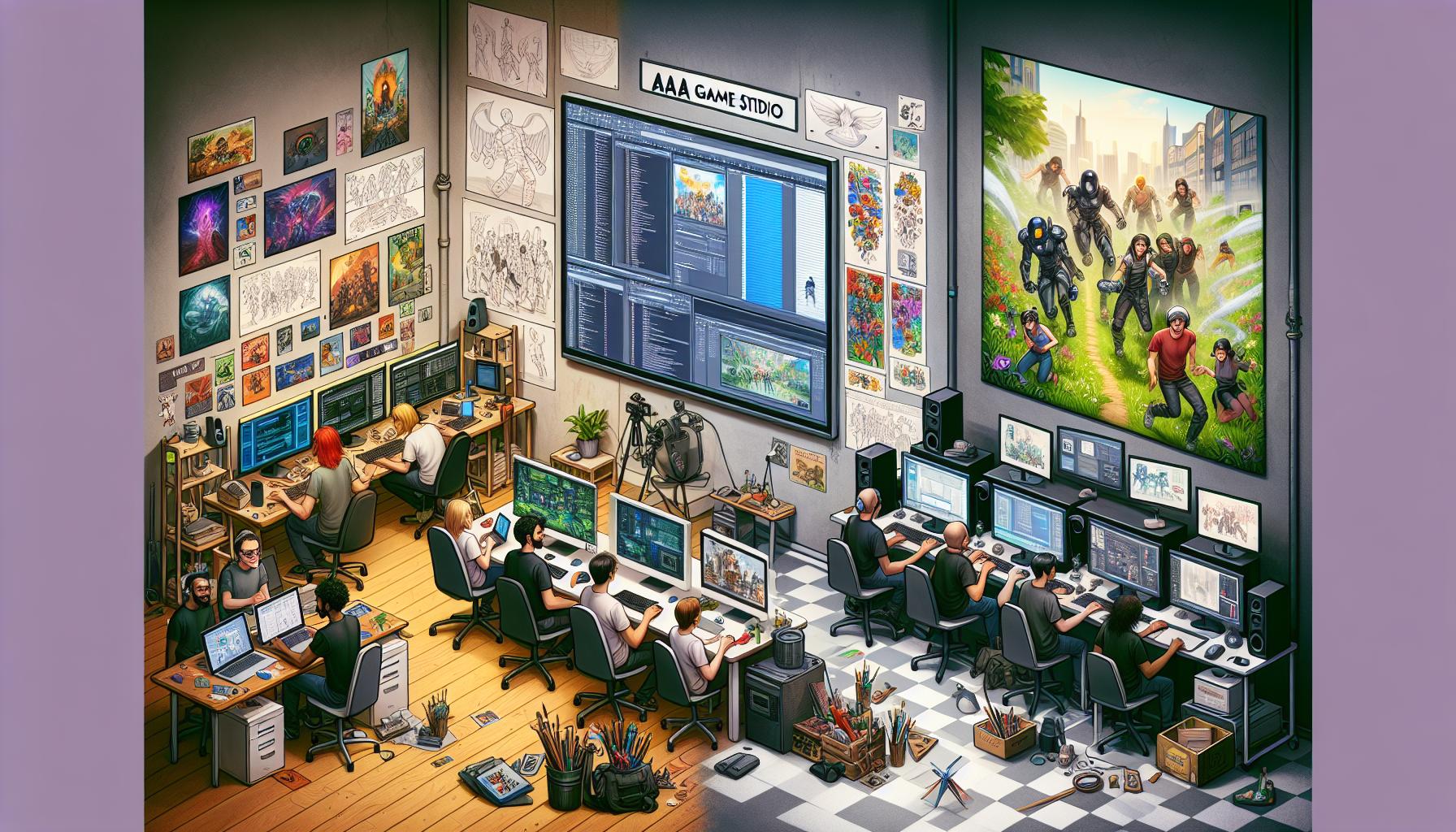
The pricing strategies between indie and AAA games reflect their distinct development costs and market positioning. These differences impact how games generate revenue and maintain long-term financial sustainability.
Development Cost Recovery
AAA games maintain a standard $60-70 base price point to recover their high production costs. Indie games typically price between $10-30, reflecting lower development expenses and competitive market positioning. This pricing structure creates distinct revenue targets:
| Game Type | Average Price | Break-Even Sales | Development Budget |
|---|---|---|---|
| AAA | $70 | 857,000 units | $60 million |
| Indie | $20 | 25,000 units | $500,000 |
DLC and Microtransactions
AAA publishers implement multi-tiered monetization systems including season passes, cosmetic items and expansion packs. Examples include:
- Battle passes in games like Call of Duty offering timed content access
- Character skins averaging $5-15 per item
- Story expansions priced at $15-30 each
Indie games focus on simpler monetization approaches:
- Single upfront purchases with complete content
- Optional content packs adding substantial gameplay elements
- Donation systems through platforms like Patreon
- Early access programs offering discounted pre-release versions
The expansion monetization models in AAA games generate 40-60% additional revenue beyond initial sales, while indie games typically earn 15-25% through post-launch content.
Impact on Gaming Industry
The gaming industry experiences significant influence from both indie and AAA sectors, creating a dynamic market ecosystem that shapes how games are developed, marketed, and consumed.
Market Share and Revenue
The gaming market demonstrates a clear division between indie and AAA segments. AAA games capture 80% of the total gaming revenue, generating $135.4 billion in 2022 through major releases like Call of Duty and FIFA. Indie games occupy the remaining 20% market share, contributing $33.8 billion through digital distribution platforms like Steam and Epic Games Store.
| Segment | Market Share | Annual Revenue (2022) | Average Monthly Players |
|---|---|---|---|
| AAA Games | 80% | $135.4B | 85M |
| Indie Games | 20% | $33.8B | 45M |
Player Experience and Expectations
Player expectations differ markedly between indie and AAA experiences. AAA titles deliver consistent technical performance with 60+ FPS gameplay, HDR support, and multiplayer features, meeting established quality benchmarks. Indie games create unique experiences through innovative mechanics like:
- Crafting emergent gameplay systems (Minecraft, Terraria)
- Exploring experimental narratives (Disco Elysium, Kentucky Route Zero)
- Implementing novel art styles (Hollow Knight, Cuphead)
- Designing focused single-player experiences (Stardew Valley, Hades)
The presence of both segments enriches the gaming landscape by providing players with diverse entertainment options at various price points.
Unique Places
Both indie and AAA games have carved out their unique places in the gaming landscape with distinct approaches to development budget creativity and player experience. I’ve found that while AAA titles consistently deliver polished high-budget experiences indie games often push boundaries with innovative gameplay and unique artistic visions.
As a gamer I believe there’s no clear winner in this comparison. AAA and indie games complement each other perfectly creating a diverse gaming ecosystem that caters to different player preferences. Whether you’re drawn to blockbuster productions or intimate creative experiences there’s never been a better time to be a gamer.

